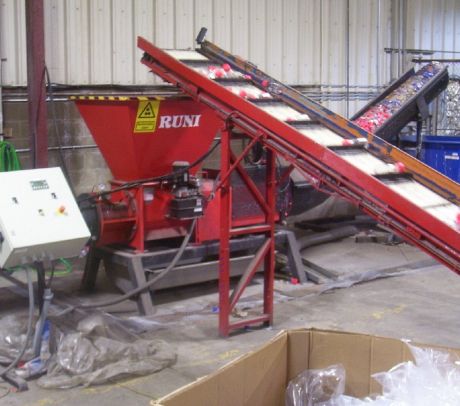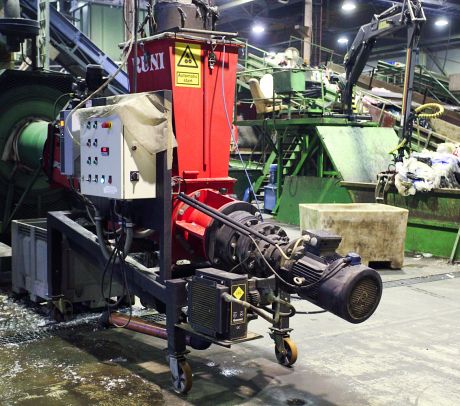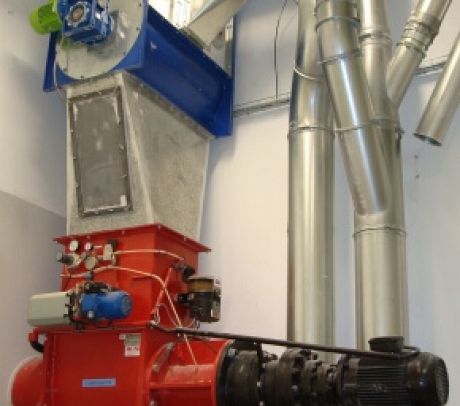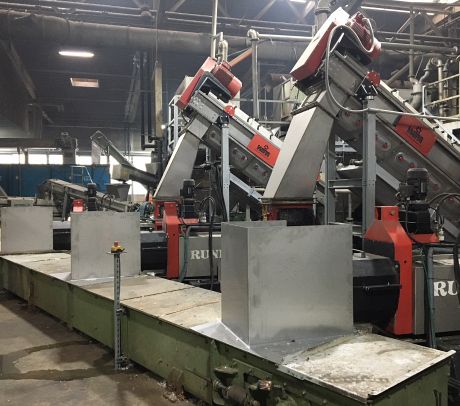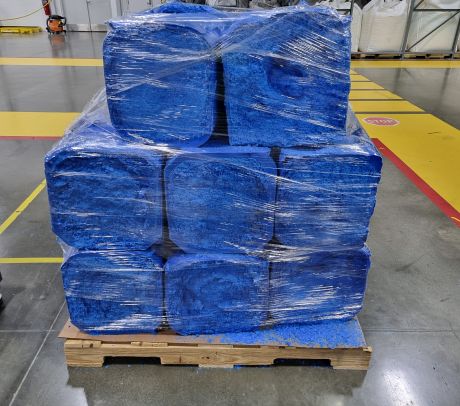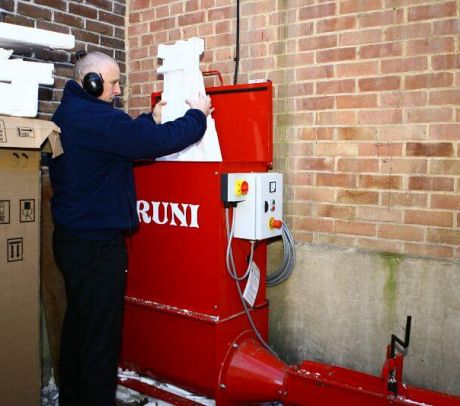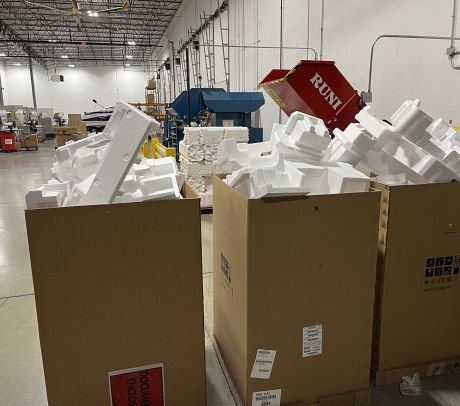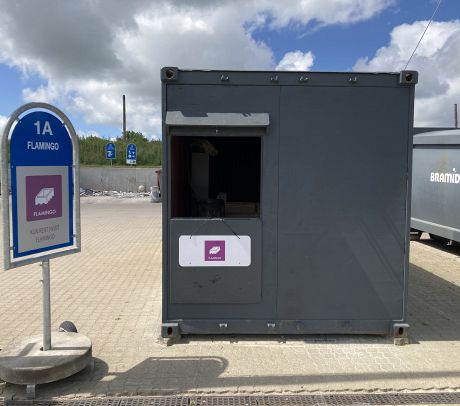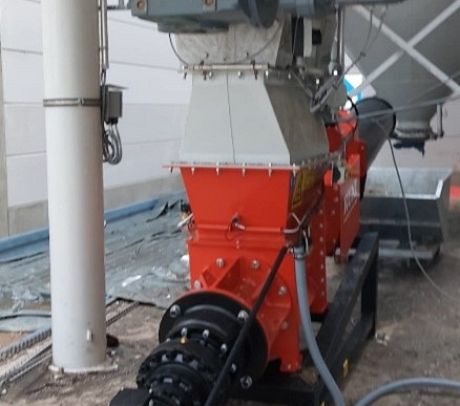Why you shouldn't use hot melt solutions to compact styrofoam

What is styrofoam, and what is it typically used for?
Styrofoam, a type of plastic foam derived from petroleum, is a widely used material with many great benefits. It has great insulation properties, and is widely used in the transportation of food and other delicate goods. The styrofoam packaging keeps produce fresh and products safe during the transport and thus minimizes food waste and product damages. Styrofoam is also used as insulation in buildings and its shock-absorbing abilities is put to good use in e.g. bicycle helmets and children's car seats.
In 2021 the global production capacity of styrofoam amounted to 15.61 million metric tons. Much of the styrofoam has a long life time, but naturally a lot of styrofoam waste will be produced each year. Unfortunately, a huge part of the styrofoam that is produced today will end up in landfill, incinerators or, even worse, in nature. There is a solution to this problem though, as another benefit of styrofoam is that it is 100 % recyclable.
The styrofoam is made from 98 % air. This makes the transportation of the bulky material from the site of the last use to the recycling facilities very expensive. To address this issue, many businesses and manufacturers turn to melting methods, such as the "hot melt" solution. However, this guide aims to shed light on why hot melting styrofoam may not be the most sustainable option and introduces the alternative of the screw compactor where the EPS is compacted without the use of any added heat.
Why you need to handle styrofoam waste efficiently
Despite its widespread use, styrofoam poses environmental challenges due to its non-biodegradable nature. Discarded styrofoam takes up significant space in waste containers and landfills, contributing to environmental concerns. However, it's crucial to highlight that styrofoam is recyclable, and it can even be turned into a valuable ressource after use! Please see our guide on how to recycle EPS here.
Can you melt styrofoam?
One of the popular methods for handling styrofoam waste is the "hot melt" solution, which involves applying heat to the material until it liquefies. While this method is commonly used, it comes with notable sustainability drawbacks.
Why Melting Polyethylene/Styrofoam with Heat Isn’t Great for Sustainability
- Environmental impact:
Styrofoam, also known as expanded polystyrene (EPS), is a plastic foam manufactured from styrene monomers. When subjected to heat, such as during the processes of melting, burning, or exposure to high temperatures, styrofoam has the potential to emit harmful substances like styrene and benzene into the air. If these hydrocarbons react with nitrogen oxides, the result is the formation of ground-level ozone—a hazardous air pollutant. The precise composition of emissions generated during the melting of styrofoam varies based on multiple factors, including the specific conditions of the heating process. - Work environment:
The primary concern when melting EPS is the release of styrene gas, which is a known respiratory irritant. Styrene is classified as a possible carcinogen by the International Agency for Research on Cancer (IARC). Prolonged or repeated exposure to styrene fumes can cause irritation of the eyes, nose, and throat. Inhaling styrene vapors in high concentrations may lead to symptoms such as headache, dizziness, and nausea. Due to the potential health risks associated with the release of toxic fumes, it is strongly advised to avoid melting or burning styrofoam in uncontrolled environments. - Energy consumption:
Melting styrofoam with heat requires a considerable amount of energy, contributing to higher energy consumption. This not only increases operational costs but also adds to the overall carbon footprint.
How RUNI Compacts Styrofoam with Friction-Generated Heat
RUNI's styrofoam compactors provide an alternative solution to traditional hot melt methods. Our machines utilize friction-generated heat to compact styrofoam efficiently. The benefits of this approach include:
- Lower Energy Consumption:
Unlike traditional hot melt methods, RUNI's compactors consume less energy, contributing to cost savings and environmental sustainability. - Efficient Waste Reduction:
RUNI's compactors create highly compacted blocks or logs of styrofoam, significantly reducing the volume of the material. This facilitates easier transportation and storage, optimizing logistics and waste management. - Minimal Environmental Impact:
By avoiding chemical solutions and reducing energy consumption, RUNI's friction-generated heat method minimizes the impact on the environment and the work environment associated with styrofoam compacting.
In conclusion, while the "hot melt" solution is a common approach to melting styrofoam, it comes with notable sustainability challenges. Alternatives like RUNI's styrofoam compactors offer a more environmentally friendly and energy-efficient solution, contributing to responsible waste management practices.


